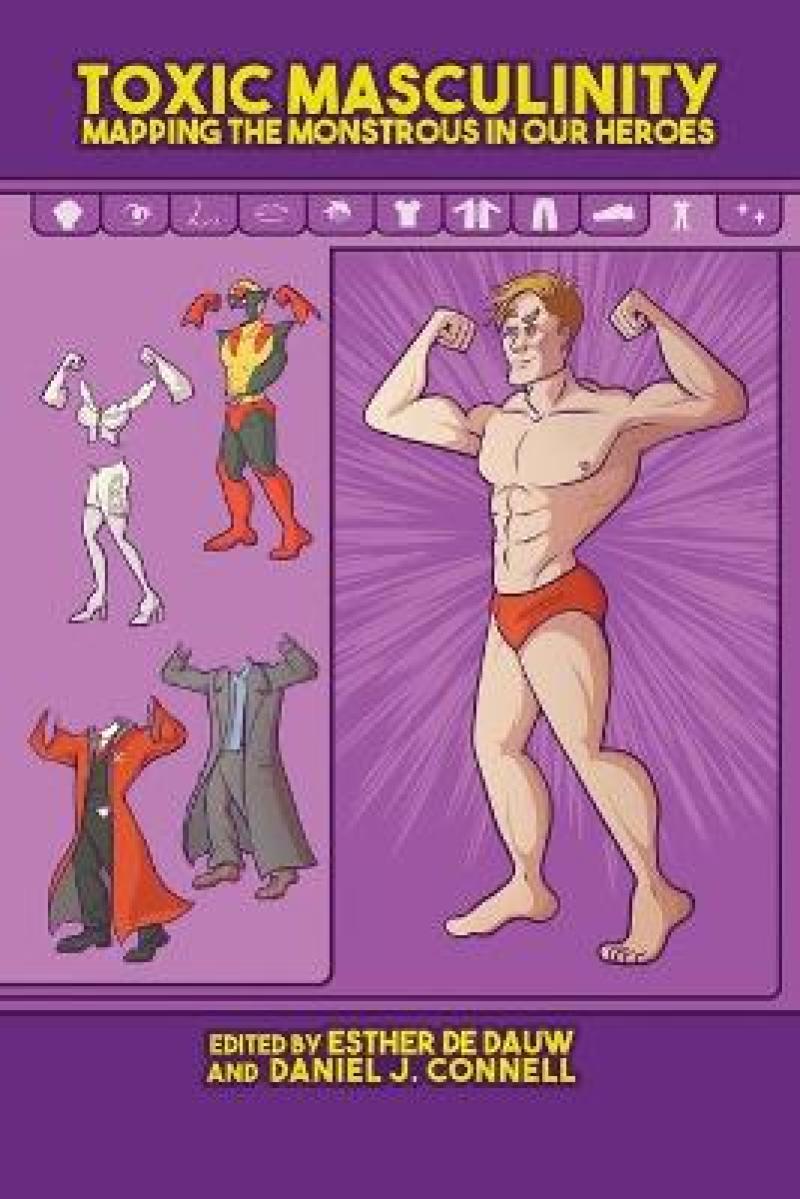The superhero permeates popular culture from comic books to film and television to internet memes, merchandise, and street art. Toxic Masculinity:asks what kind of men these heroes are and if they are worthy of the unbalanced amount of attention. Contributors to the volume investigate how the (super)hero in popular culture conveys messages about heroism and masculinity, considering the social implications of this narrative within a cultural (re)production of dominant, hegemonic values and the possibility of subaltern ideas, norms, and values to be imagined within that (re)production.
Divided into three sections, the volume takes an interdisciplinary approach, positioning the impact of hypermasculinity on toxic masculinity and the vilification of "other" identities through such mediums as film, TV, and print comic book literature. The first part, "Understanding Super Men", analyzes hegemonic masculinity and the spectrum of hypermasculinity through comics, television, and film, while the second part, "The Monstrous Other", focuses on queer identity and femininity in these same mediums. The final section, "Strategies of Resistance", offers criticism and solutions to the existing lack of diversity through targeted studies on the performance of gender. Ultimately, the volume identifies the ways in which superhero narratives have promulgated and glorified toxic masculinity and offers alternative strategies to consider how characters can resist the hegemonic model and productively demonstrate new masculinities.
With contributions by Daniel J. Connell, Esther De Dauw, Craig Haslop, Drew Murphy, Richard Reynolds, Janne Salminen, Karen Sugrue, and James C. Taylor.
Divided into three sections, the volume takes an interdisciplinary approach, positioning the impact of hypermasculinity on toxic masculinity and the vilification of "other" identities through such mediums as film, TV, and print comic book literature. The first part, "Understanding Super Men", analyzes hegemonic masculinity and the spectrum of hypermasculinity through comics, television, and film, while the second part, "The Monstrous Other", focuses on queer identity and femininity in these same mediums. The final section, "Strategies of Resistance", offers criticism and solutions to the existing lack of diversity through targeted studies on the performance of gender. Ultimately, the volume identifies the ways in which superhero narratives have promulgated and glorified toxic masculinity and offers alternative strategies to consider how characters can resist the hegemonic model and productively demonstrate new masculinities.
With contributions by Daniel J. Connell, Esther De Dauw, Craig Haslop, Drew Murphy, Richard Reynolds, Janne Salminen, Karen Sugrue, and James C. Taylor.
Les mer
The superhero permeates popular culture from comic books to film and television to internet memes, merchandise, and street art. Toxic Masculinityasks what kind of men these heroes are and if they are worthy of the unbalanced amount of attention.
Les mer
Produktdetaljer
ISBN
9781496828941
Publisert
2020-08-30
Utgiver
Vendor
University Press of Mississippi
Vekt
278 gr
Høyde
228 mm
Bredde
152 mm
Dybde
10 mm
Aldersnivå
P, 06
Språk
Product language
Engelsk
Format
Product format
Heftet
Antall sider
194
Biografisk notat
Esther De Dauw is a comics scholar who focuses on the intersection of gender and race. Awarded her PhD by the University of Leicester in 2018, she teaches and provides student support at the University of Leicester. Her work has been featured in The Journal of Graphic Novels and Comics and FRONTIER #4.Daniel J. Connell is an independent researcher whose work focuses on deconstructing hypermasculinity in various mediums. His PhD, awarded by Brunel University in 2011, focuses on the hypermasculine phenomenon in the fledging comic book literary fiction genre.
